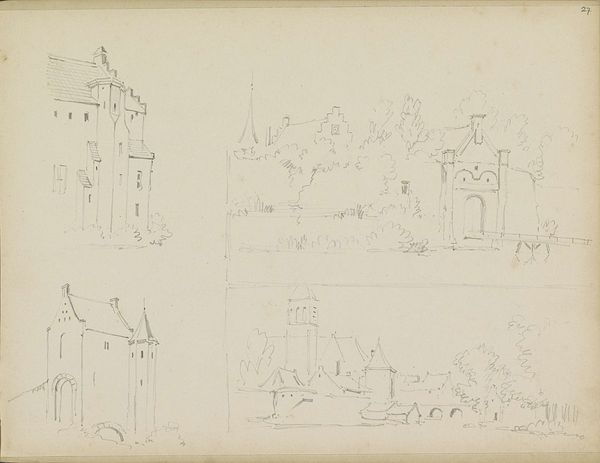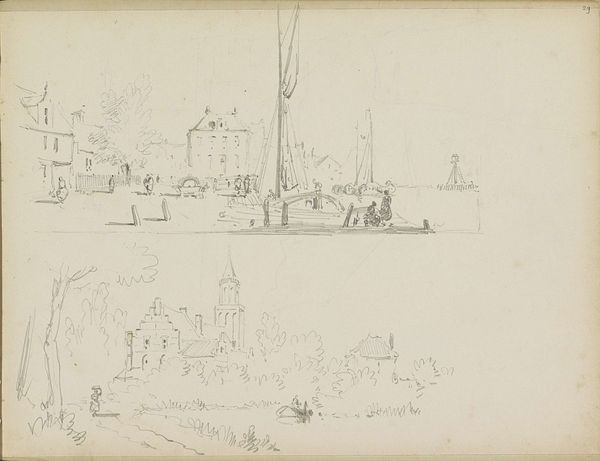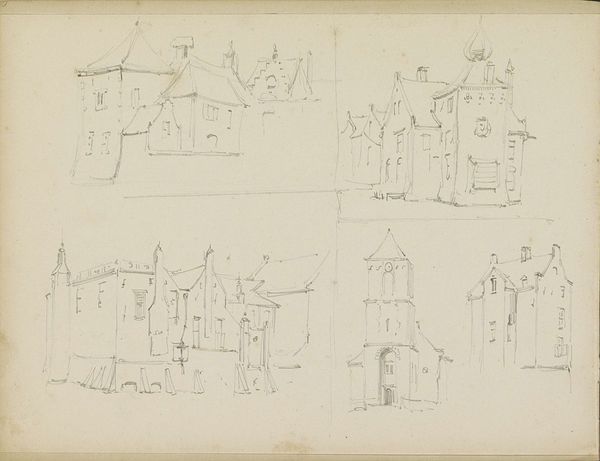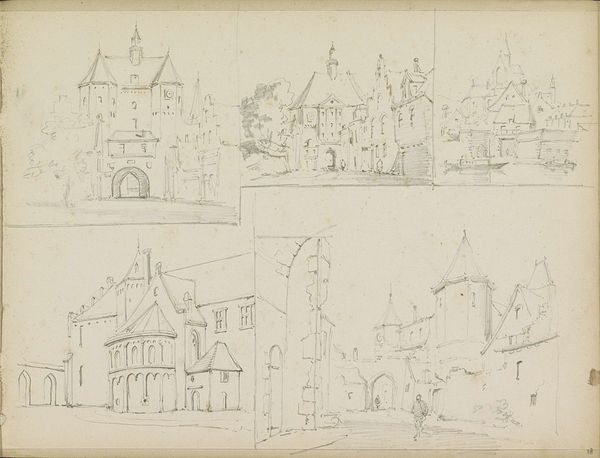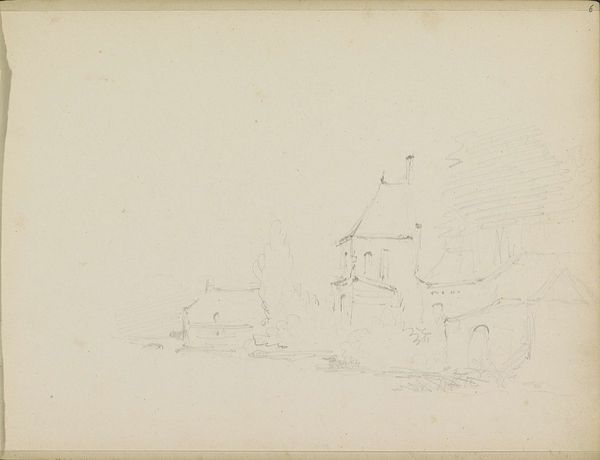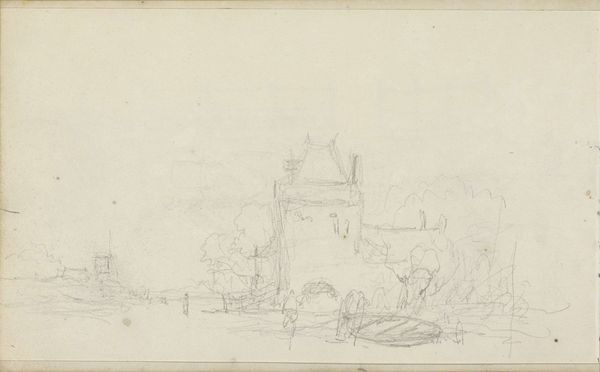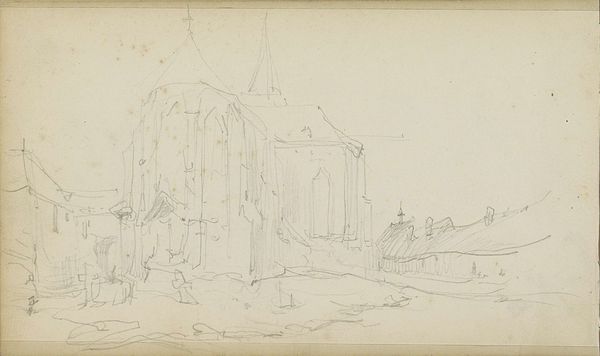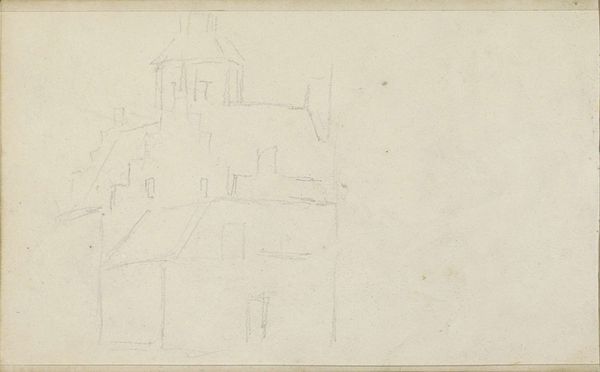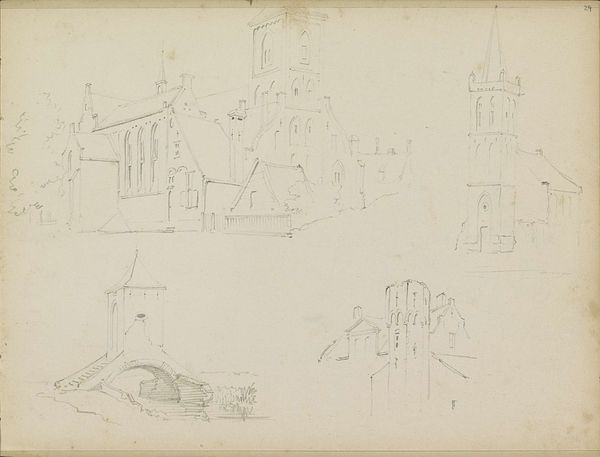
Twee landschappen en een gezicht op een kasteel of buitenplaats c. 1828 - 1897
0:00
0:00
drawing, pencil
#
drawing
#
aged paper
#
toned paper
#
light pencil work
#
sketch book
#
landscape
#
personal sketchbook
#
idea generation sketch
#
sketchwork
#
ink drawing experimentation
#
pencil
#
sketchbook drawing
#
cityscape
#
sketchbook art
#
realism
Copyright: Rijks Museum: Open Domain
Curator: Welcome! We’re looking at a page from Adrianus Eversen's sketchbook. The title is “Twee landschappen en een gezicht op een kasteel of buitenplaats,” which translates to “Two landscapes and a view of a castle or country house.” It’s believed to have been made sometime between 1828 and 1897. Editor: My initial impression is of ephemeral studies, moments captured lightly in pencil. The artist focuses on tone, building layers of shadow that describe the forms with the utmost efficiency. Curator: Exactly! The aged, toned paper and the style really lend this work a sense of the era it comes from. Eversen worked during a time of significant urban development, and the rising middle class saw sketches such as these documenting landscapes as picturesque scenes. The act of sketching landscapes like these becomes an expression of cultural identity. Editor: The compositions are really interesting, each vignette offering a slightly different perspective. The soft lines really enhance the natural light that illuminates these spaces, but also abstracts and highlights line quality. It allows him to emphasize elements and even distort certain spatial relations to great expressive effect. Curator: And we see hints of that historical and societal element that Eversen taps into here; these are depictions that show an increasingly urban audience their past! The estates that they come from are idealized—that allows them to carry that extra emotional resonance with that audience. Editor: Yes! Look at the subtle variations in hatching and the density of lines in each rendering. Each conveys such precision and accuracy. His quick and effective technique beautifully illustrates the structure of a scene. Curator: It is truly compelling when one sees how artistic practices play into historical memory and the development of shared public identity! The pencil work, aged paper… Editor: ...allows him to emphasize spatial relationships by making light of what truly makes these elements so architecturally inspiring. What is not rendered with extreme clarity almost adds a further layer of emotional appeal. Curator: It just shows how we, as both a culture and even a museum as a reflection of it, determine meaning. Editor: Right—we each extract different aesthetic values when considering elements like those represented on the page, making each viewing deeply personal.
Comments
No comments
Be the first to comment and join the conversation on the ultimate creative platform.



